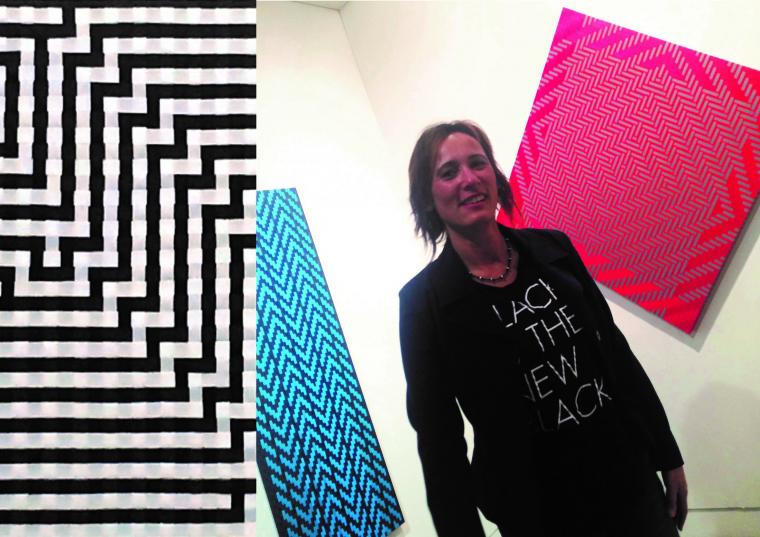I’ve known several artists who had to give up painting in oils due to an allergic reaction, but it was working with flax that affected Annabelle Buick. Her exhibition ‘I See. I Saw’ opened at Aratoi on Friday.
“It’s during the hapene – preparation of the flax using a mussel shell or blunt knife to soften the strips – that a lot of resins are released and this made me break out in eczema,” she says.
She had been putting in long hours of weaving while working towards an exhibition at the end of her first year at Whitireia, where she was doing a Craft & Design Diploma. She graduated in 2000.
Flax weaving had felt like a natural choice for Annabelle, who is of Ngati Pukenga and Scottish descent. “I’d had a good grounding in the ‘colonial crafts’ like crochet and knitting as a child,” she says. Born in Tauranga, she grew up in Martinborough, with her father working as a shearer and her mother as a cook. The family traveled widely in the region through her childhood.
She later saw how these skills could be carried into fine arts by New Zealand artist Ani O’Neill, one of her tutors at Whitireia. She went on to explore the traditional art of harekeke (flax weaving) and learnt many Maori and Pacific patterns which are the basis of her current body of work.
But the medium she loved was making her sick, and it was time to explore new possibilities. She experimented with weaving handmade paper, then discovered ribbon, grosgrain, and commercial trims and webbing which she stretches meticulously across wooden frames.
“Most of my works use about 190 metres of the material, as they are double-layered with the warp and weft,” she says.
The resulting ‘paintings’ seem to flicker, pulse and buzz, echoing the abstract ‘Op Art’ of English artist Bridget Riley who rose to prominence in the 1960s and 70s. The name ‘Op Art’ came from optical and there is certainly an illusory quality to Annabelle’s work.
“I think of my work as a perceptual experience that seeks to look beyond our most immediate reality. Insight into understanding the ambiguity of visual illusions may awaken our inner-senses to the things we cannot ‘see’.”
She has made an extensive study of the patterns and geometry that occurs in nature, in everything from plants to crystals and snowflakes. “It starts to go beyond cultures and into something universal, a sacred geometry, which you find is also a mathematical language.”
Even more possibilities have opened up since she moved from black and white into colours, which vibrate and bounce off each other, blending optically when viewed from a distance. It all adds complexity to the question that continues to fascinate her: “Why do ‘illusions’ exist if our mind’s eye is unable to process what we actually see?”
Annabelle is represented at Kura Gallery. 
Exhibitions at Aratoi: I See. I Saw, until 9 August; Elements Exhibition: NZ Potters Inc, until 21 June; Selections from The Rutherford Trust Collection, until 16 August; Settling the Land: Order Out of Chaos, until 16 Aug; Wairarapa Whakaputa Mohio: Settling the Land, until 31 Dec.